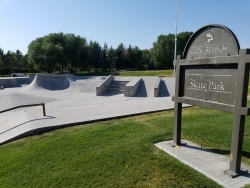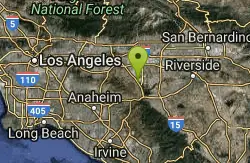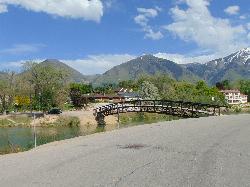Skateboarding
"Are you ready to shred some gnar at the local skatepark? Get your boards ready, because we're about to dive into the world of community skateparks.
What are they? Simply put, they're public parks designed specifically for skateboarders to grind, ollie, and kickflip to their heart's content. These concrete playgrounds can be found in communities all over the world, from small towns to big cities.
Why are they important? Skateparks provide a safe and designated space for skaters to hone their skills and express themselves creatively. They also promote an active lifestyle and a sense of community among skaters.
Where can you find them? Skateparks can be found in a variety of locations, from standalone parks to ones that are part of a larger recreational complex. You can often find them in schools, community centers, and even shopping malls.
How can you get involved? If your community doesn't have a skatepark, there are often advocacy groups working to bring one to your area. You can also get involved by volunteering to help maintain and improve the skatepark in your community.
So grab your deck and head to the skatepark to session with your crew. Who knows, you might just discover your next favorite spot to shred!"
Here's some of our favorite skateboard parks

Claire Boyle Skatepark
Rexburg, Idaho
0.5 miles NW of Rexburg, IdahoThere are 2 bowls right next to each other plus several boxes quarter pipes and rails. It's not huge but it's also rarely crowded. It's all concrete with metal edge, specially for...
Skateboard
Little Chino Skatepark
Chino Hills, California
3.8 miles SE of Chino Hills, CaliforniaLittle Chino Skatepark, located in Chino Hills, California, is a popular destination for skateboarders, BMX riders, and rollerbladers in the Inland Empire area. The skatepark, which is free to the...
Skateboard
Tron Skatepark
Beaverton, Oregon
3.0 miles NW of Beaverton, OregonTron Skatepark in Beaverton, Oregon is a must-visit destination for skateboarders, BMX riders, and inline skaters in the Pacific Northwest. The park, which opened in 2002, is a unique and challenging...
Skateboard
Salem Pond
Salem, Utah
0.2 miles SW of Salem, UtahSalem Pond is a favorite place of many of the community members in and around Salem, Utah. Here at the pond, you can swim, kayak, canoe, or paddleboard on the deep water. Attached to the beautiful...
Canoe, Kayak, Skateboard, Swim
Ambassador Skate Plaza
Los Angeles, California
19.3 miles S of Los Angeles, CaliforniaVery famous skate park in Wilmington, California! Revamped by Spohn Ranch and the world-renowned skater Paul "P-Rod" Rodriguez P-Rod did demos here with thousands of skaters...
Skateboard
Fleischmann Edge Skate Park
Naples, Florida
1.8 miles N of Naples, FloridaSkateboard near Naples, Florida
Skateboard
Ormond Beach Skatepark
Ormond Beach, Florida
1.9 miles W of Ormond Beach, FloridaSkateboard near Ormond Beach, Florida
Skateboard
New Milton Skate Park
New Milton, England
0.1 miles NW of New Milton, EnglandSkateboard near New Milton, England
Skateboard
Oyster Creek Skate Park
Englewood, Florida
3.6 miles SE of Englewood, FloridaSkateboard near Englewood, Florida
Skateboard
Omega Zone Skate Park
Eustis, Florida
1.1 miles S of Eustis, FloridaSkateboard near Eustis, Florida
Skateboard- Plan Ahead and Prepare. Know the regulations and special concerns for the area you'll visit. Prepare for extreme weather, hazards, and emergencies. Schedule your trip to avoid times of high use. Visit in small groups when possible. Consider splitting larger groups into smaller groups. Repackage food to minimize waste. Use a map and compass to eliminate the use of marking paint, rock cairns or flagging.
- Travel & camp on durable surfaces. Durable surfaces include established trails and campsites, rock, gravel, dry grasses or snow. Protect riparian areas by camping at least 200 feet from lakes and streams. Good campsites are found, not made. Altering a site is not necessary.
- Dispose of waste properly. Pack it in, pack it out. Inspect your campsite and rest areas for trash or spilled foods. Pack out all trash, leftover food and litter. Deposit solid human waste in catholes dug 6 to 8 inches deep, at least 200 feet from water, camp and trails. Cover and disguise the cathole when finished. Pack out toilet paper and hygiene products. To wash yourself or your dishes, carry water 200 feet away from streams or lakes and use small amounts of biodegradable soap. Scatter strained dishwater.
- Leave what you find. Preserve the past: examine, but do not touch cultural or historic structures and artifacts. Leave rocks, plants and other natural objects as you find them. Avoid introducing or transporting non-native species. Do not build structures, furniture, or dig trenches.
- Minimize campfire impacts. Campfires can cause lasting impacts to the environment. Use a lightweight stove for cooking and enjoy a candle lantern for light. Where fires are permitted, use established fire rings, fire pans, or mound fires. Keep fires small. Only use sticks from the ground that can be broken by hand. Burn all wood and coals to ash, put out campfires completely, then scatter cool ashes.
- Respect wildlife. Observe wildlife from a distance. Do not follow or approach them. Never feed animals. Feeding wildlife damages their health, alters natural behaviors, and exposes them to predators and other dangers. Protect wildlife and your food by storing rations and trash securely. Control pets at all times, or leave them at home. Avoid wildlife during sensitive times: mating, nesting, raising young, or winter.
- Be considerate of other visitors. Respect other visitors and protect the quality of their experience. Be courteous. Yield to other users on the trail. Step to the downhill side of the trail when encountering pack stock. Take breaks and camp away from trails and other visitors. Let nature's sounds prevail. Avoid loud voices and noises.

















